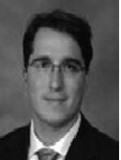HealthManagement, Volume 3 - Issue 1, 2009
The evaluation and management of syncope is often challenging to
clinicians. A ‘well-appearing” patient may present to the Emergency Department
(ED) or outpatient clinic who may be at risk for malignant arrhythmias. Poor
prognosis would inevitably result in extensive testing and hospital admission.
The recognition of this dilemma has led to recent clinical investigations to
assess specialised multidisciplinary syncope management units, involving
experts in cardiology, emergency medicine, and a multidisciplinary team of
health professionals to establish a potential cause of syncope while stratifying
risks for long-term prognosis.
Developing a Standard Syncope Management Unit (SMU)
Several multidisciplinary efforts have been undertaken to develop efficient evaluation pathways to manage patients with syncope of unknown cause. They have combined elements from clinical guidelines, clinical decision rules and risk scores, such as the San Francisco Syncope Rule and the OESIL risk score with specialised critical pathways to enhance the diagnostic yield and practice efficiency of syncope evaluations. Figure 1 (see page 31) illustrates both models.
In 2004, Shen and his colleagues published the Syncope Evaluation in the Emergency Department Study (SEEDS) (Shen et al. 2004), a single centre, randomised clinical trial, comparing the syncope observation vs. standard care for patients with intermediate risk of cardiovascular adverse outcomes.
The objective was to assess the diagnostic yield and hospital admission rates of patients with syncope of unknown cause. Patients who presented to the ED with syncope were classified according to their risk for subsequent cardiovascular adverse outcomes in high, intermediate and low risk strata. Intermediate-risk patients were randomised either to standard care (a brief evaluation in ED followed by hospital admission most of the time) or to a six hour admission to a “syncope observation unit” in the ED.
Echocardiography, tilt-table testing, electrophysiological consultation and outpatient follow-up were available to the ED physicians at their discretion. The study demonstrated an increase in diagnostic yield (diagnosis established in 67% of SMU and 10% standard care) and a decrease in the hospital admission rate (43% SMU and 98% standard of care), without affecting all-cause mortality.
In 2003, Brignole and colleagues published “The Management of Syncope, Referred Urgently to General Hospitals With and Without Syncope Units”, a prospective cohort study comparing six hospitals with syncope units and six without. The results revealed lower admission rates in the study group than the control (43% vs. 49%); fewer laboratory tests (75% vs. 86%) and brain computed tomographies and or MRI (17% vs. 24%) (see Table 1, page 31). The authors concluded that management between groups was substantially different and to exploit its effect, the syncope unit (managed by cardiologists) should work in close liaison with the ED as well as other departments.
Multidisciplinary Approach to Syncope: Our Experience
Our institution evaluates around 600 patients with syncope annually in the ED and 2,500 patients in the outpatient clinics (medicine, cardiology, neurology, etc.), accounting for approximately 10 - 20% of the electrophysiology practice. This high volume of patients, combined with the multiple etiologies of syncope and a very diverse and complex population represents a diagnostic challenge to physicians from the ED to the inpatient/outpatient services.
In 2000, a multidisciplinary effort, led by experts in cardiology, electrophysiology and emergency medicine developed and launched the syncope observation unit in an effort to improve the triage, diagnosis, therapy and education of patients with syncope. The overall design involved ED assessment, observation unit evaluation or hospital admission and outpatient follow up at an arrhythmia clinic staffed by electrophysiologists, and neurology clinics staffed by epilepsy specialists and autonomic neurologists (see Fig.1, page 31).
What is Needed for this to Work?
The success of multidisciplinary syncope evaluation depends on a combination of short/long term interventions in specialised units equipped with sufficient resources and expertise. Here are a few key principles:
1. Standardised Assessment and Guidelines
In the SEED study, patients randomised to the specialised unit received a standard protocol, which included continuous cardiac telemetry for up to six hours, hourlyvital signs and orthostatic blood pressurechecks. Ancillary studies at the discretionof the ED physician, included echocardiogram,tilt table testing and carotid sinus massage. After the observation period, the patient was re-evaluated by the ED consultant and a decision regarding electrophysiology consultation was made. Information obtained from monitoring, testing, and consultation in the syncope unit contributed to the real-time component of risk stratification, which ultimately resulted in improved diagnostic yield in the ED and reduced overall hospital admission and costs.
2. Communication Between Departments
Communication channels between ED supervising physicians and other specialties like cardiology, neurology and internal medicine need to be established “a priori”; availability on call pagers or phones to ensure a clear transfer of information between consultants, adequate follow-up and overall enhanced patient care. In our “conventional” practice, the triage of patients without a diagnosis (often occurring due to time and resource constraints in the conventional ED practice model) is coordinated by the primary supervising emergency physician via telephone with the cardiology service. This usually results in admission for further evaluation.
The SEED study compared this conventional approach to the “syncope unit approach”. After the observation period, with additional information from continuous monitoring, vital signs, echocardio- graphic examination (as needed), and tilttable testing and carotid sinus massage (asneeded), the patient was re-evaluated bythe ED consultant, and a request for anelectrophysiology consultation could bemade if deemed to be necessary.
In the absence of a presumptive diagnosis at this point, these efforts would result in the confirmation of the patient’s risk for a cardiogenic cause of syncope and overall prognosis. Among patients with expected low risk for cardiogenic causes, most patients were dismissed from the ED to be followed in the outpatient clinics.
Admission to the hospital would be arranged if additional treatments were required. Electrophysiology consultation was available 24/7 via telephone or onsite to assess high-risk patients. The ED physician would contact the EP cardiologist and the testing regimen and final disposition of the patient would be reached by consensus.
3. Optimal Follow-Up Assessment
Emergency department physicians and staff had direct access to the heart rhythm centre to arrange follow-up evaluation when a cardiac cause of syncope was suspected. Follow-up in other medical and neurological clinics could be arranged as well through a routine scheduling system among patients with a low risk for a cardiogenic etiology.
Conclusion
The multidisciplinary model for syncope evaluation represents a promising solution to a universal dilemma. We believe that after validating the efficacy and cost-effectiveness of syncope observation units at multi-centre trials, the next step would be to develop a syncope facility model suitable for implementation at community and international hospitals; utilising a combination of elements from different departments in the inpatient and outpatient setting. The ultimate goal is to provide an efficient and cost-effective evaluation and triage of these patients while decreasing overall costs and enhancing patient’s care and satisfaction.
Acknowledgments:
Dr. Luis A. Serrano is supported by the Mayo Clinic CTSA University
of Puerto Rico Scholar Transition Award.









